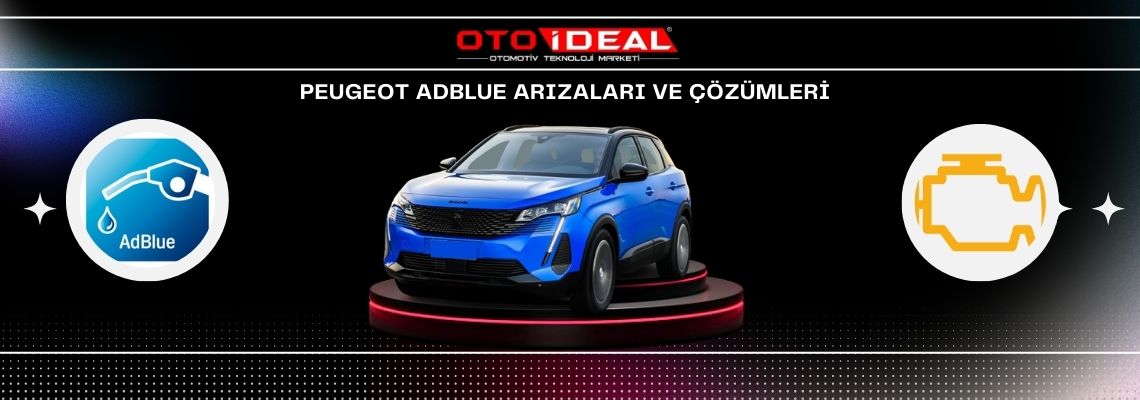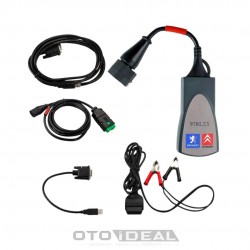Peugeot Vehicle Emission System Warnings and Solutions
We examine in detail the emission system warnings commonly encountered in Peugeot models and professional solution methods. Everything you need to know about AdBlue, DPF and EGR systems.
Peugeot Emission Systems
Emission control systems have become an indispensable part of modern diesel vehicles. The three basic systems found in Peugeot's 3008, 5008, 308, 508, 2008, Partner and Expert models:
AdBlue System
Reduces NOx emissions
DPF System
Filters soot particles
EGR System
Reduces combustion temperature
How Does the AdBlue System Work?
AdBlue is a urea-based fluid that serves as part of Selective Catalytic Reduction (SCR) technology. We can simply explain the system as follows:
warning AdBlue Warnings
- AdBlue fluid level in the tank has decreased
- AdBlue injector is clogged
- AdBlue quality is poor or has exceeded its shelf life
- There is a problem with the SCR catalyst
- NOx sensors are faulty
AdBlue Warning Solution Steps
Check the AdBlue tank level. Usually located in the trunk area or next to the fuel tank.
Check the quality of the AdBlue fluid. Expired fluid should be replaced.
Read error codes with OBD2 device:
- P20E8: AdBlue pressure low
- P20F6: Level sensor fault
- P2033: Heater fault
Perform system reset with Peugeot Lexia 3 Diagbox.
Frequently Asked Questions
How does the AdBlue system work?
AdBlue is injected into the exhaust system and converts to ammonia and CO2 at high temperatures. The resulting ammonia reacts with NOx emissions in the SCR catalyst, converting them to harmless nitrogen and water vapor.
How long does AdBlue last?
AdBlue consumption depends on vehicle usage patterns. On average, refilling may be required every 1000-1500 km. City driving results in higher consumption.
What happens if I ignore the AdBlue warning?
If AdBlue runs out, the vehicle enters safe mode and engine power is limited. In some cases, the vehicle may not start at all.
What is DPF regeneration?
It is the process of cleaning the filter by burning the soot particles accumulated in the DPF at high temperature. There are two types: passive and active regeneration.
How to turn off the DPF warning?
You can trigger regeneration by driving continuously for 15-20 minutes. If this doesn't work, professional cleaning may be required.
What oil should I use for DPF?
Use DPF compatible, low ash content (Low SAPS) C2 or C3 grade oil.
Why does the EGR valve get clogged?
Over time, carbon deposits clog the EGR valve. This negatively affects engine performance.
What are the symptoms of EGR failure?
Idle vibration, shaking at low speeds, power loss, high fuel consumption and black smoke from the exhaust.
How to clean the EGR?
You can use EGR valve cleaner spray or remove the valve and perform manual cleaning.
Regular Maintenance Recommendations
Quality Fuel
Buy fuel from reliable stations
Highway Driving
At least once a month, 30 minutes of continuous driving
Regular Oil Change
Use oil according to manufacturer recommendations
Periodic Check
Have emission systems checked regularly
Emission System Fault Detection
You can easily diagnose and solve Peugeot emission system faults with professional diagnostic devices.
Explore Diagnostic DevicesConclusion
Your Peugeot's emission systems are critical for both eco-friendly driving and optimal engine performance. Early diagnosis and intervention of problems arising in these systems will prevent bigger and more costly failures.
Don't ignore warning lights, have your vehicle checked regularly and apply the maintenance recommendations mentioned above. "Regular maintenance and proper intervention protect both your wallet and your vehicle."





-75x75.jpg)





-75x75w.png)




-75x75w.jpg)


-75x75w.jpg)










Leave a Comment